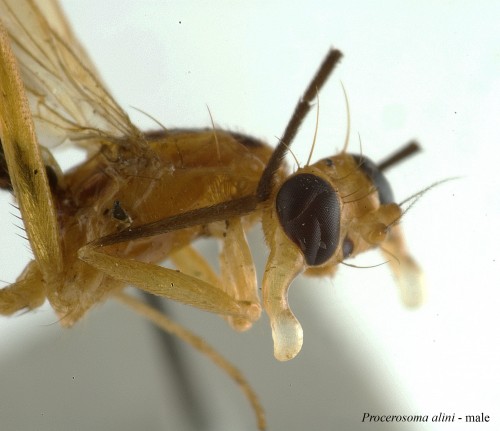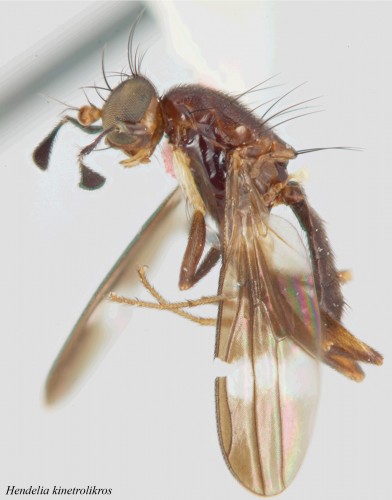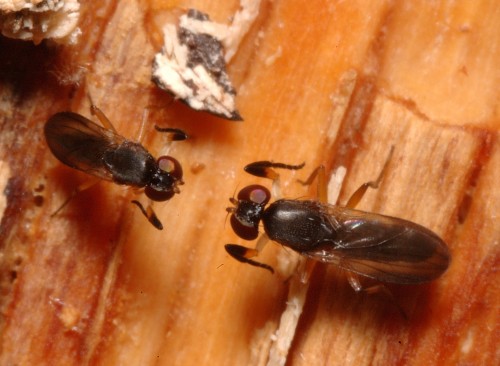The latest volume of the Canadian Journal of Arthropod Identification was published today, and it’s one of the most visually compelling keys published so far! Allowing you to identify all the world’s genera of Clusiidae as well as the species found in North America, this new key provides plenty of fantastic photos, an awesome layout and functionality, and something not yet utilized in CJAI papers, a Lucid™ Matrix key. While I’m personally not a fan of Lucid™ products in particular, matrix keys provide users an open-ended path to identification, increasing the chances of a correct identification.
While clusiid flies aren’t necessarily the most frequently observed flies, they are nonetheless fascinating, featuring some incredible behaviours. One of the few acalyptrate families to defend lekking territories, males will take up residence on sunny stretches of logs or dry forest floors and battle with other males for prime areas. Check out the battle gear on these two males:
The structures on the head of both species are not antennae or mouth parts, but actually hugely elaborate outcroppings of the cheek plates. Not all species have undertaken such amazing modifications, with some opting to use some good old fashioned elbow grease.
Heteromeringia nitida, a species native to the eastern seaboard of the USA, partakes in a little fisticuffs to defend it’s lekking sites. Well, perhaps more like elbowicuffs, as can be seen in this photo taken by Dr. Stephen Marshall in South Carolina. The males have folded their tarsomeres back and are measuring up prior to combat. I observed this species awaiting a sparring partner while on my first entomology field course in spring 2007, but was never witness to the main event. We were in South Carolina in early May of 2007, so be sure to keep an eye out for fallen oak logs in sunny forest patches in the coming weeks!
Clusiid flies have some fantastic morphological modifications and are better than any UFC fight; it’s not just money and pride on the line, but sex and the potential to father the next generation! With the identification aids provided in this paper, Clusiidae are now accessible to naturalists and biologists the world over. Take a look through the guide and explore these fantastic flies; I’m sure this paper will see plenty of use by those intrigued by the park pugilists!
![]() Owen Lonsdale, D.K.B Cheung, & S.A. Marshall (2011). Key to the World genera and North American
Owen Lonsdale, D.K.B Cheung, & S.A. Marshall (2011). Key to the World genera and North American
species of Clusiidae (Diptera: Schizophora) Canadian Journal of Arthropod Identification, 14 : doi:10.3752/cjai.2011.14 OPEN ACCESS
Note: This paper requires Adobe Flash Player to work so it won’t work on your iPad or iPhone unfortunately, and there is no PDF copy included.



